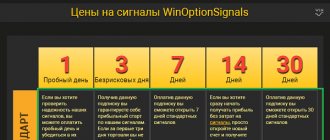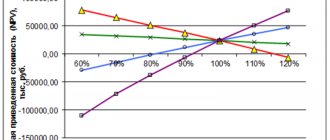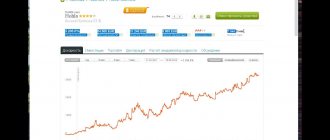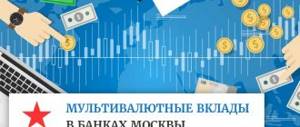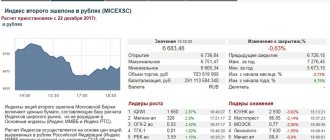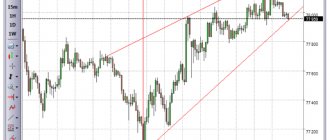Main tasks of market development forecast
The key goal of any market analysis (operational and strategic) is to identify patterns of its development in the future. To develop a marketing strategy, scientifically based forecasts of market development prospects are needed. Business sectors that specialize in the production or trade of goods are primarily interested in the needs of people, which determine the dynamics of consumer demand. In addition, companies need to assess their own capabilities as soberly as possible in order to find ways to gain competitive advantages, optimally use their own and borrowed resources, outline ways for their further development and the feasibility of investments.
Thus, to formulate a successful marketing policy, any business needs a market analysis, the ultimate goal of which is to forecast its development. Analytical activity solves three problems:
- Identification of current trends in the dynamics and structure of trade turnover and consumer demand, both opportunistic (covering the immediate period of time) and strategic (covering the long term).
- Study and construction of a model of the influence of a combination of various factors (economic, social, trade and organizational) on trade turnover and demand.
- Searching for new opportunities and options for business development, developing competitive advantages that will become in demand on the market in the near or distant future.
The patterns of market development provide an understanding of exactly how and within what limits various market processes will occur, and what consequences a business can expect. Market forecast models should form a holistic and consistent picture of the economic and social factors that determine the prospects for market development.
Marketing is necessary to predict the most likely developments in product markets and manage future changes. To build a forecast, a number of objective factors should be taken into account, primarily:
- production: plans, standards and current tasks;
- market: expected turnover, prices, profitability and profitability indicators, volume, structure and dynamics of product supply;
- planned investments, expansion of production and distribution networks;
- socio-demographic: expected structure, number, composition of buyers, their migration and needs (material, information and any other).
Read the article: How to become a market leader
Content
- Summary
- The market is gradually recovering, but prospects remain vague
- Macroeconomic forecast for 2021
- We expect a decrease in inflation rates and continued loose monetary policy
- Impact of the macroeconomic environment on the corporate sector
Anton Tabakh, Managing Director for Macroeconomic Analysis and Forecasting, Expert RA
How to collect information to make a market forecast
The market situation is formed under the influence of various factors, primarily social, economic, political, technical, scientific and informational. When analyzing a particular market, the researcher must determine how significant each of them is and what the specifics of their influence on market development are, and develop a forecast.
Market conditions are the actual relationship between supply and demand for a particular type of product and the price level for it. It is studied at three levels: commodity, sectoral, and general economic. The main objects of analysis aimed at creating a forecast for market development are the price range, terms of sale, volumes of inventory, indicators of supply and demand, and the general state of production.
Market research is designed to find answers to the following questions:
- what is the degree of influence of certain manufacturers on the market;
- what the development of this market may be like in the near and distant future (forecasts and assumptions);
- how to most fully satisfy the needs and requests of customers;
- are there ways to optimize companies' production capacities and use them more wisely, etc.
The approach to studying the conditions of the goods market should be comprehensive. That is, it is desirable to apply various forecasting models and analytical techniques and use a wide range of information sources.
Most often, the collection and analysis of market information is carried out through observation, survey, modeling and experiment methods.
A method such as observation
, is the simplest, but at the same time the most effective. It is a systematic collection of data characterizing the situation on commodity markets and their retrospective analysis with the development of a forecast for such parameters as market capacity, the number of suppliers of certain types of products, sales volumes (in monetary and physical terms), dynamics and speed of sales, inventories goods at all stages of sales. The observation method examines the object of study in its natural environment and is based on current factual data, therefore it provides high (compared to other methods) reliability and objectivity of assessments and forecasts.
In addition to observation, market researchers actively use survey
– obtaining information by a specialist analyst directly from buyers, clients, and employees of enterprises in the form of an oral or written interview or questionnaire. Survey methods are indispensable in situations where it is necessary to establish the reasons for refusing to make a purchase or returning products, clarify customer preferences and the logic of choosing a particular product. Typically, a survey is used in conjunction with observation.
More complex methods include experiment
– studying the impact of some factors on others in a real situation by artificially creating the necessary conditions. The experiment is used to establish cause-and-effect relationships when one or more market conditions change (for example, an increase in sales volumes as a result of lower prices) and provides the ability to track various market factors separately, limiting the influence of extraneous factors.
The reliability of market analysis is largely determined by the quality of the source data. Any company must have an information support system in which general, special and commercial information is stored.
General information is information about the situation on the market as a whole (in relation to the development of a given industry or production). These are industry and government statistics, official reporting and accounting forms.
Commercial information concerns the sale of manufactured goods. Companies receive it from partners in the process of information exchange. These are proposals in the field of assortment policy, reviews of market conditions, statistical materials received from market research services, orders and applications from trading companies.
Special-purpose information is acquired by companies during specially held events aimed at studying market developments. Some of these materials can be obtained from research organizations, while others the company creates in-house. This includes surveys of buyers and the general public, interviews with experts and production and trade workers, industry exhibitions and fairs, and market meetings. Apart from conducting surveys and similar procedures, there is nowhere to obtain this specific information, so such information is very valuable. Any research concerning market conditions, its development and forecasting must be based on large amounts of special information.
The companies' own sources of information that monitor the situation on the product market are stores that play the role of strongholds, intermediary retail chains, and special consumer panels.
Network of strong points
necessary for companies to monitor the dynamics of demand for their goods among the population. It includes sales points in the form of company stores that sell these goods in the sales area and have agreed, on a contractual basis, to monitor demand.
The intermediary network usually consists of wholesale firms and trading enterprises. They also track the development of demand in the market for a particular product and changes in its market conditions.
A consumer panel is a selected sample of consumers (or their families) who regularly participate in recurring demand surveys conducted by a company's market research service. Panel studies in the form of surveys are necessary to identify trends in consumption dynamics and collect consumer opinions about a product. The formation of the panel is subject to a number of requirements that ensure its representativeness: participants are selected by age, gender, place of residence, income level and other parameters.
These three sources of information provide important information that should be stored as an information base. The database must be updated regularly and always be up to date (and not just in the pre-planning period). It is on this that the company’s marketers rely, studying market developments and making forecasts.
To solve this problem, an analysis is carried out of the production and supply indicators of one or another type of goods, retail sales volumes and their structure, the amount of inventory in warehouses and at various retail outlets. In addition, information on the number of wholesale orders, applications for goods, and its movement within retail chains is analyzed and compared. The result of the research is a forecast of market development for a particular product.
Read the article: The most promising business areas in 2017
The market is gradually recovering, but prospects remain vague
The economic recession caused by the pandemic crisis and related quarantine measures continues. However, today the forecast for GDP dynamics for 2021 is much more optimistic than just a few months ago. The peak growth in economic activity occurred in August–September, after which the market began to stagnate, which is confirmed by both official statistics and data from payment operators. The further dynamics of market recovery will highly depend on the evolution of the epidemiological situation and the severity of restrictions aimed at combating the pandemic. Business support programs from the authorities and the Central Bank will also play an important role. Most international borders will likely remain closed until at least mid-2021. The base scenario assumes that at the end of 2021, GDP will decrease by 3.8%, in 2021 it will increase by 3.5% (mainly due to an increase in budget expenditures at the end of 2020 and a new round of recovery in commodity prices), and in 2022 - m will increase by 2.2%.
Types of shares and dividend policy
Shares can be ordinary or preferred. The former give the right to holders of large packages to participate in the management of the company. Holders of prefs (from the English preference) usually do not take part in the management of the enterprise, but they have the right to higher dividends than owners of ordinary shares.
Each issuing company decides on the dividend payment policy, their size and frequency of payments. For example, dividends can range from 17.5% to 35% of the issuer’s net profit. The amount of dividends is approved at a meeting of shareholders, but taking into account the wishes of the board of directors.
It must be borne in mind that the company is not obliged to pay dividends to the owners of ordinary shares, but can use profits to develop the business. This often happens with shares of young companies that seem to be growing rapidly, but shareholders may not receive dividends at the end of the year.
From this we can conclude: by buying shares of stable companies, one can hope for a stable income in the form of dividends, but in the case of young and growing enterprises, an investor can make money by increasing the value of the securities themselves and their subsequent sale.
But that's not all. You can make a profit even if the stock price falls by opening shorts - short positions. The essence of the method is that an investor takes shares from a broker at a percentage, sells them while the price is high, waits for the price to drop, and then buys them back cheaper. The method is not the simplest or most reliable, so beginners should not take risks when opening short positions.
Afterword
Supporters of technical analysis argue that if news regarding an exchange asset is published, then this is already reflected in the price and, accordingly, on the chart. In their opinion, reading the news feed is not necessary. There is a valid objection to this. Before price changes become noticeable, for example, on a daily chart, they must appear on all shorter-term charts.
It’s the same here as in life. When looking at something large and significant from afar, we lose small but important details, and concentrating on details prevents us from seeing the phenomenon as a whole. The art of an investor lies in a wise compromise between all sorts of extremes, and this only comes with experience.
Subscribe to my blog news and let your experience bank fill up!
Macroeconomic forecast for 2021
Table 1. Key macroeconomic indicators – baseline scenario
| Key indicators | 2018 | 2019 | 2020 | 2021(p) | 2022(p) |
| GDP growth, % | 1,7 | 1,4 | -3.8 (p) | 3,5 | 2,2 |
| Inflation, % | 3,2 | 3,2 | 4,9 | 3,5 | 3,5 |
| Central Bank key rate (December 31), % | 7,75 | 6,25 | 4,25 | 4 | 4,75 |
| RUB/USD rate (December 31) | 65 | 61,5 | 74 | 69 | 69 |
| Cost of a barrel of Brent oil (average) | 68 | 65 | 52 | 53 | 53 |
Forecast 1. The global crisis against the backdrop of Covid-19 will continue
If you've read my magnum opus, "Broad Daylight Heist: How Taxes Shaped Our Past and Will Change Our Future," then you know that history often repeats itself as governments expand taxation and control during times of crisis in ways they cannot. to do in peacetime.
If, for example, there had been no Napoleonic and World Wars, we would never have had to pay such a large income tax, which was first introduced in the United States during the Civil War, but it never affected the lives of ordinary Americans until the Revenue Act of 1942, passed to finance US "participation" in World War II.
However, when the crisis passed, taxation and control did not return to the previous levels where they were before the crisis began. When World War II ended, the income tax remained, because now it was necessary to sponsor the restoration of the economy and the country. The Institute for Fiscal Studies calls this the “ratchet effect.”
Having won the general election in 1841 with statements against income tax as part of the campaign, British Prime Minister Sir Robert Peel reintroduced it to the country in 1842 as a "temporary measure" to finance emergency deficits. Today, 178 years later, this temporary measure remains. But then the tax applied only to those who earned a lot. It took another crisis, the First World War, for ordinary workers to start paying taxes.
Quantitative easing, a form of inflation (in that it increases the money supply), was introduced as a temporary measure to overcome the 2008 banking crisis. Nobody voted for him. It is doubtful that anyone would have approved it at all if not for the global financial crisis. Today, 12 years later, this is considered the norm.
It turned out to be a rather long prologue to my first prediction. We will never return to the freedoms we enjoyed before Covid-19. Something happened that allowed the government to shut down the economy. This is the new normal.
Whether vaccines help or not, coronavirus is now part of our lives. New strains will emerge, some more dangerous, some less so. But movement control, testing, tracing, quarantine, vaccination, payments to those in need, temporary layoffs (all steps towards a basic income), even isolation are the new normal.
Airports will no longer be the same as they were before the attacks of September 11, 2001.
The same thing happened now. Those who optimistically expect that everything will be as before will be greatly disappointed.
Impact of the macroeconomic environment on the corporate sector
A loose monetary policy reduces the cost of servicing borrowed funds and stimulates refinancing, however, high market uncertainty coupled with a reduction in income due to quarantine restrictions does not allow businesses to recover through investment activities and attracting loans.
Due to the decline in real disposable income of the population, personal consumption is unlikely to become a driver of market growth. At the same time, export opportunities may suffer both from price regulation through quotas (agriculture) and from foreign trade conflicts (metals and chemicals).
The oil industry will gradually recover due to increased business activity on the global market. Easing the terms of the OPEC+ deal could play into the hands of Russian oil exporters. The growth in trade volumes with China due to its rapid recovery after the pandemic could lead to a significant increase in the share of trade with China in Russia’s foreign trade portfolio.
